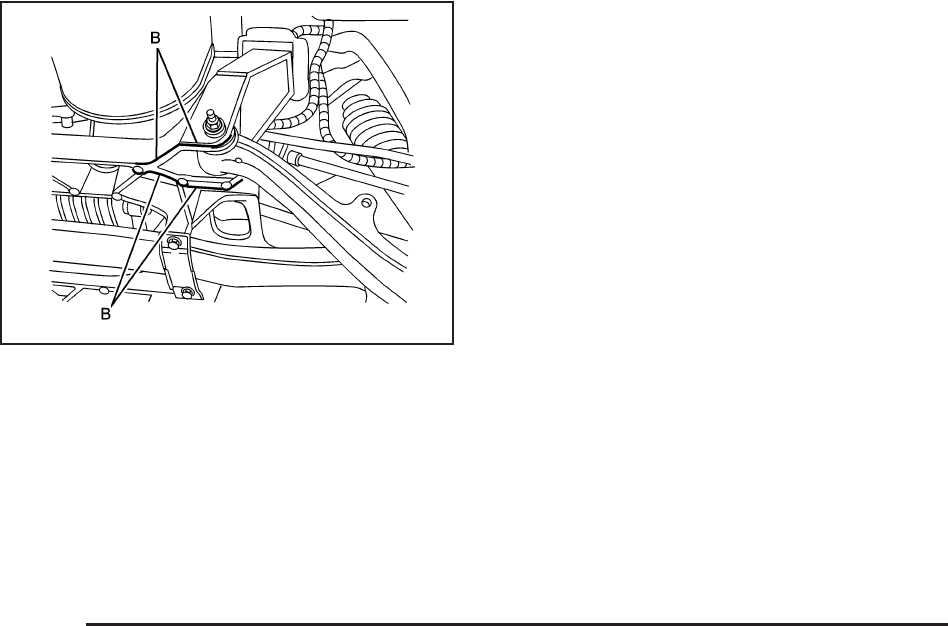
3. Lift the vehicle with the jack, making sure the jack
spans at least two of the crossmember ribs (B).
For more information, see Doing Your Own Service
Work on page 5-4.
If a Tire Goes Flat
Your vehicle has no spare tire, no tire changing
equipment, and no place to store a tire.
It is unusual for a tire to blow out while you are driving,
especially if you maintain your tires properly. If air
goes out of a tire, it is much more likely to leak out
slowly. See Tires on page 5-58 for additional
information.
Your vehicle, when new, had run-flat tires. This type of
tire can operate effectively with no air pressure, so
you will not need to stop on the side of the road
to change a flat tire. You can just keep on driving. The
shorter the distance you drive and the slower the
speed, the greater the chance that the run-flat tire will
not have to be replaced. Run-flat tires perform so
well without any air that a Tire Pressure Monitor System
(TPMS) is used to alert you if a tire has lost pressure.
See Run-Flat Tires on page 5-64 and Tire Pressure
Monitor System on page 5-68.
5-84


















